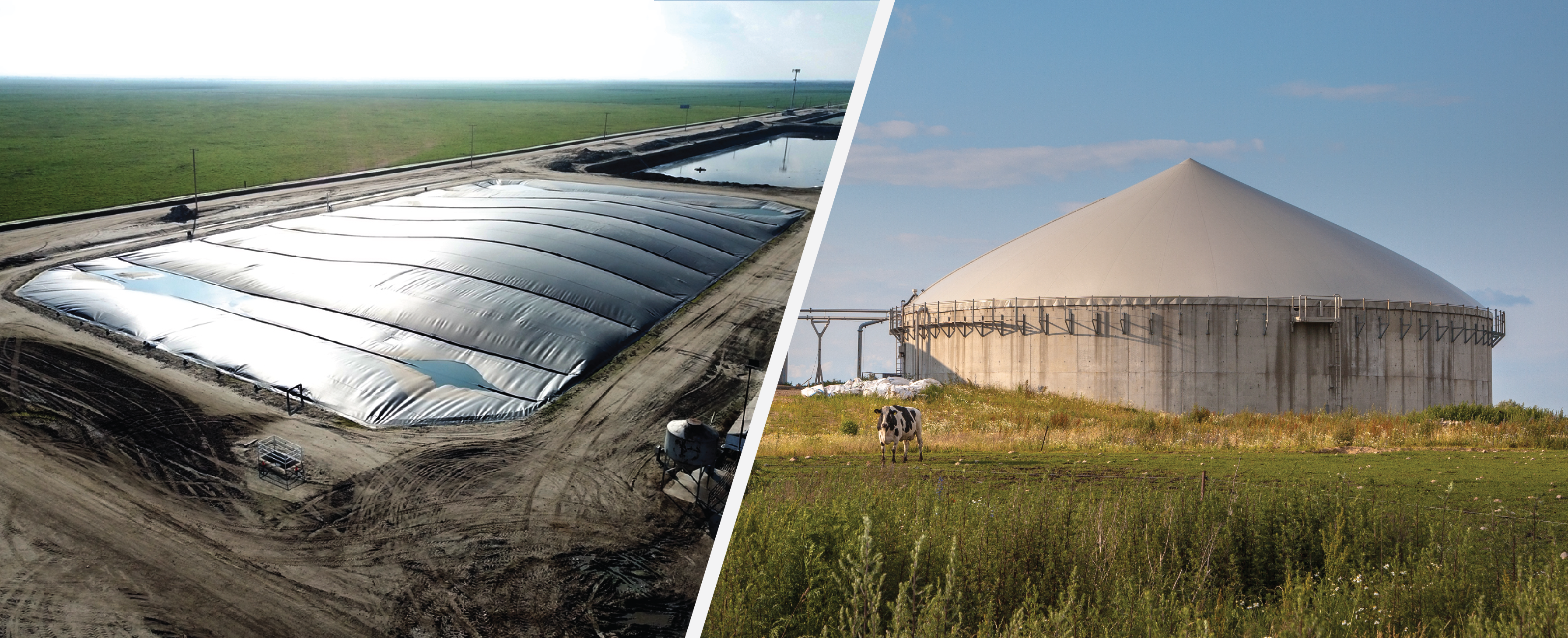A biodigester is a special container where organic waste, from both humans and animals, is fermented to produce fertilizer and biogas. It is like a mechanical stomach or a much larger version of a cow’s stomach. A biodigester can be made from plastic, metal, or concrete depending on the application and is an anaerobic environment where the microorganisms in the waste decompose the matter. Biodigesters can be above or below ground, depending on the type. Decomposition of the waste matter in the biodigester produces methane, hydrogen sulfide, and pathogen-free fertilizer.
A biodigester can be implemented in rural or urban areas where space allows since it can range from the size of a small tent to a towering industrial silo. Sufficient raw materials, or feedstock, must also be available. For example, a 10-cubic-meter biodigester would need enough cattle to produce about 100 kg (220 lbs.) of manure every day to feed the biodigester (Climate Technology Centre & Network). A typical dairy cow produces approximately 80 pounds of manure daily (USDA).
TYPES OF BIODIGESTERS (EPA)
- Standalone: This type of biodigester may be owned by a recycling business, community-based business, or municipality. The feedstock is processed from one or multiple sources, and “tipping fees” are received by the owner for hauling or accepting the feedstock from these outside sources. The feedstock is usually made up of food waste, but this type of anaerobic digester can be built to process additional feedstock.
- On-Farm: Biodigesters process manure and other farm-related wastes to produce biogas. This helps reduce odors, generates more farm revenue, and produces organic solid and liquid fertilizer. The accumulated biogas from these digesters is used to generate methane fuel, which can be utilized on-site and converted to electricity to sell to municipalities.
- Water Resource Recovery: Digesters at water resource recovery facilities are used to treat municipal wastewater solids. They vary in size and shape. There are multiple benefits at these facilities, such as cleaning water, recovering nutrients, and reducing reliance on fossil fuels.
CHALLENGES WITH BIODIGESTERS
- Removal of H2S – The gas produced in a biodigester includes methane, hydrogen sulfide (H2S), and other gases. H2S is especially problematic due to its toxicity, corrosive properties with metals (like internal combustion engines), odor, and local, state, and federal regulations regarding air emissions. In unprocessed biogas, H2S concentrations can exceed 4000+ ppm – note that OSHA lists 20 ppm as the allowable limit for human exposure over 8 hours. In many applications, the H2S must be scrubbed from the biogas to produce safe, usable methane as well as regulatory compliance. Interra Global provides a solution called FerroSorp®, a pelletized gas purification compound made of iron hydroxide, which can bring H2S concentrations down to safe levels. This solution is ideal in applications such as sewage treatment plants, landfills, farm/agricultural environments, and other industrial facilities where H2S is produced in exhaust gas.
Despite the challenges, biodigesters and the production of biogas can help save costs at all scales, in addition to the beneficial impact on the environment in reduced methane emissions. It’s good for the community, the region and often financially incentivized by local, state, and federal government agencies.



